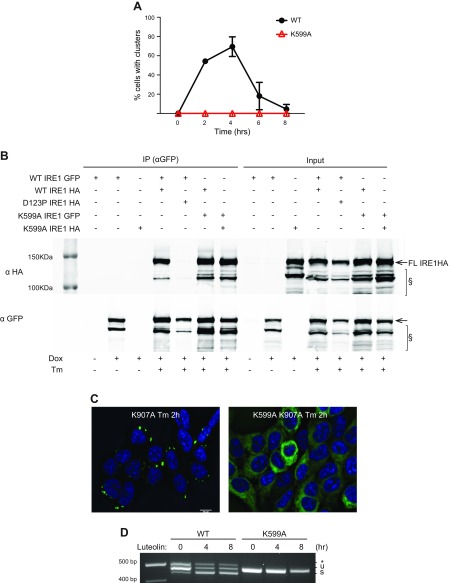Figure 6.
Active kinase domain is needed for formation of clusters. A) Kinase-deficient IRE1GFP does not cluster under ER stress. HAP1KO cells expressing WT or K599A IRE1GFP were treated with Tm (4 μg/ml) and imaged at the indicated times. Shown are the percentages of cells with IRE1GFP clusters. B) IRE1GFP K599A mutant is able to dimerize. HAP1KO cells expressing IRE1HA WT, D123P, or K599A and coexpressing IRE1GFP WT or K599A were treated with Tm (4 μg/ml) for 4 h when indicated. Cells were collected, lysed, and subjected to immunoprecipitation with GFP-Trap beads. Beads-bound proteins were analyzed by Western blot. Input: 5%. §: lower MW bands that appear to be IRE1α specific and size-sensitive to Tm treatment. C) The K599A mutation suppresses the clustering induced by the K907A mutation. Cells expressing either the K907A mutant or the K599AK907A double mutant were treated with Tm (4 μg/ml) for 2 h and clustering was visualized as in Fig. 1. Scale bar, 10 μm. D) The K599A mutant is refractive to the stimulation of RNase activity via luteolin. HAP1KO cells expressing WT or K599A IRE1GFP were treated with luteolin (50 μM) for the indicated times and RT-PCR was performed as previously described.

